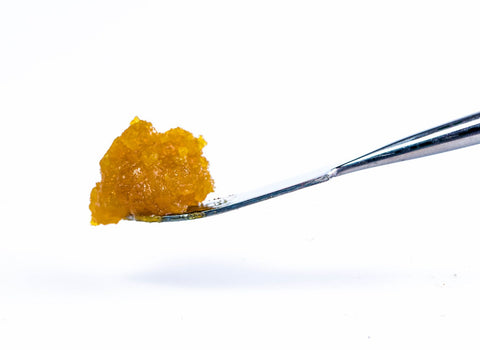
If nausea gets you green in the face, taking small amounts of cannabis may be the perfect cure. But did you know that too much of a good thing can backfire big time?
When taken in excessive amounts, cannabis use can cause a debilitating case of nausea and vomiting, known as cannabis hyperemesis syndrome, or CHS.
While uncommon, CHS illustrates that cannabis, like any medicine, can have adverse effects when used excessively long-term. The lesson here is moderation.
With low doses of cannabis, you can relieve nausea and vomiting and experience a plethora of therapeutic and medicinal benefits without the risk of overdoing it.
Let’s explore the science behind this paradoxical syndrome and how to consume cannabis responsibly to avoid having it become a medical problem.
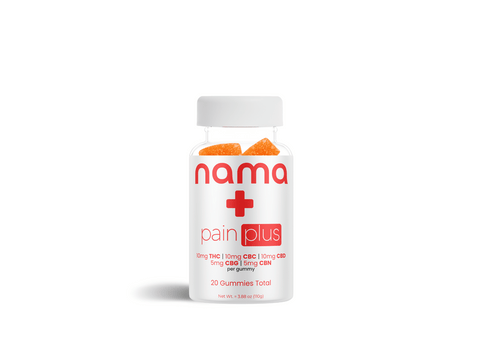

THC: 10 mg | CBC: 10 mg | CBD: 10 mg | CBG: 5 mg | CBN 5mg
What is cannabis hyperemesis syndrome?
Cannabis or cannabinoid hyperemesis syndrome is characterized by recurring cycles of nausea, severe vomiting, and stomach pain in people who use cannabis heavily and frequently over a long period.
THC in higher amounts can cause intoxication, resulting in paradoxical pro-emetic characteristics. THC is stored in fat cells in the body. Stress and food-deprivation stimulate the sympathetic nervous system…Therefore, higher THC levels (after heavy ingestion of cannabis with highly potent THC) can explain its pro-emetic activity. (Parisetti, et. al.)
Apart from violent bouts of vomiting and nausea, here’s how to know you have CHS:
- You may experience abdominal pain and cramping. The pain is usually diffused rather than localized and can be debilitating in severe cases.
- You have a compulsive bathing or showering with hot water. Oddly, when you expose your skin to hot water, it provides temporary relief of symptoms of nausea and vomiting.
- Cyclical symptoms: while symptoms generally resolve days to weeks after stopping cannabis use completely. However, the episodes can last days to months, interspersed by normal symptom-free periods.
Cannabinoid hyperemesis syndrome mainly affects chronic, heavy cannabis users who overstimulate their endocannabinoid system.
CHS has been characterized as a downregulation of the CB1 receptor and endocannabinoid system (ECS), the basic homeostatic regulator of vertebrate physiology, as a result of chronic THC exposure. (Russo, et. al.)
According to research, cannabidiol may play a protective role against CHS.
Cannabidiol, in contrast to THC, is non-psychotropic, has a low affinity for CB1 and CB2 receptors, and acts as a partial agonist at the 5-HT1A receptor. CBD enhances the expression of CB1 receptors in the hypothalamus and amplifies the hypothermic effects caused by THC. In animals the effect of CBD on toxin-induced vomiting displays a biphasic response with low doses producing an antiemetic effect whereas higher doses enhance vomiting.
To make sure this often debilitating condition doesn’t get you, stick to smaller amounts of cannabis. Our Energy gummies contain just 2.5mg THC for a mild mood lift without the risk of CHS.
Can cannabis relieve nausea?
In many clinical and preclinical studies, two main active compounds from the cannabis plant—Delta 9 THC and CBD—have demonstrated the potential to relieve nausea. This is accomplished through their ability to interact with the body's endocannabinoid system (ECS).
How does cannabis influence the ECS to alleviate nausea?
The ECS is a complex network of signals and receptors that influence and regulate the most important physiological processes in the body—including nausea and vomiting. One of the two main cannabis receptors in the ECS is the CB1 receptor and it is found primarily in the brain, with a smaller portion of it scattered around our gut—which means CB1 receptors have a huge role in regulating the sensations of nausea and vomiting.
A 2014 study on emesis (nausea) and the ECS suggested that “CB1 receptors are also found on dopaminergic, noradrenergic and other transmitter-containing neurons in the brain regions involved in the control of nausea and vomiting.” This highlights the significant impact of the ECS on our body’s nausea response.
Cannabis compounds, also known as phytocannabinoids mimic the chemical composition and function of our natural cannabinoids, called endocannabinoids. When THC interacts with CB1 receptors, THC produces sweet euphoria, relaxation, and pain relief.
But the dosage you take heavily dictates the interaction with CB1 receptors and THC’s effects: smaller doses provide medicinal relief from things like nausea without major side effects, while larger doses can cause sedation, confusion, anxiety, and even worsened nausea.
We told you microdosing is the way to go. People are finding quite a few benefits from taking small, controlled amounts of weed.
Cannabis regulates pro-nausea neurotransmitters
The interaction between THC and CB1 receptors in the brain and gut leads to one more potentially therapeutic benefit: cannabis regulates levels of serotonin which in turn modulates feelings of nausea and vomiting.
Serotonin is a neurotransmitter that can trigger nausea. It is released from enterochromaffin cells in the gut lining in response to irritants or toxins, signaling the brain to initiate the vomiting reflex. When potentially harmful substances are detected in the gut, serotonin alerts the brain to stimulate vomiting and expel contents before the stomach absorbs more of them.
The more serotonin in the gut and brain, the heavier the nausea signaling will be.
Increased serotonergic neurotransmission causes anorexia, nausea, vomiting and diarrhea in other settings, such as carcinoid syndrome, so gastrointestinal adverse effects are not unexpected with drugs that increase tissue serotonin levels. (McManis and Talley)
A 2007 article found that cannabinoids elicit antidepressant-like behavior. By activating CB1 cannabinoid receptors and serotonergic neurons, cannabis can turn down the “volume” on these pro-nausea signals, preventing excessive vomiting responses.
But there is one more nausea-related neurotransmitter in town: dopamine. Its activity in the brain’s chemoreceptor trigger zone communicates nausea signals to the vomiting center. THC binds to CB1 receptors on dopamine neurons in this area and suppresses its release, essentially decreasing the transmission of these pro-nausea signals.
Delta9-THC prevents emesis via cannabinoid CB1 receptors in a potent and dose-dependent manner in D2/D3-receptor-agonist-treated shrews at doses well below those which cause significant motor depression. (Darmani and Crim)
In other words, THC also regulates dopamine, increasing its levels (when you’re feeling blue) and lowering them when necessary (to suppress feelings of nausea and vomiting).
THC and CBD relieve chemotherapy-induced nausea
Chemotherapy, while a critical cancer treatment, often brings with it distressing side effects like insomnia, chronic pain, severe nausea, and bouts of vomiting. The good news is that for years, cancer patients have been alleviating chemotherapy-induced side effects with cannabis.
A 2022 review suggested that “positive treatment effects have been reported for some medical cannabis products in the palliative care setting,” but that further evidence is needed to support its use in clinical practice.
Positive treatment effects (statistical significance with P < 0.05) were seen for some [cannabis] products in pain, nausea and vomiting, appetite, sleep, fatigue, chemosensory perception and paraneoplastic night sweats in patients with cancer…
One practical application of cannabis is dronabinol, a THC-based synthetic drug. It interacts with the ECS to stimulate the brain’s regions responsible for hunger and the control of nausea and vomiting. The US Food and Drug Administration approved this THC oral medication back in 1985 to treat instances of anorexia nervosa, nausea, and weight loss in AIDS and cancer patients.
As you can see, lower amounts of cannabis have no adverse effects and may even bring nausea relief. That’s why we love our microdosed THC edibles: you minimize the risks while still benefiting.
While gummies offer convenience and quick ingestion, our THC-infused beverages may be a more sophisticated, yet equally safe way of taking small amounts of your favorite cannabinoids.
With our Buzz drops, you can infuse any non-alcoholic drink and experience the blissful waves of relief from nausea without worrying about dosing or cannabis taste. Learn more on how to infuse your favorite drinks with cannabis.
Microdoses vs. excessive cannabis use
While small, controlled microdoses provide targeted therapeutic effects, excessive intake over long periods can trigger adverse events like worsened nausea, eventually leading to cannabis hyperemesis syndrome.
Since we’ve found ourselves in quite a paradox, let’s clearly illustrate what effects small doses have in comparison to heavy cannabis use.
Therapeutic effects of low cannabis doses:
- Microdoses of 2–10mg of THC and CBD provide precise relief without impairment.
- Low-dose cannabis lightly stimulates appetite and antiemetic neurotransmitters.
- Produces anti-inflammatory effects in the gut.
- Regulates nausea signaling pathways.
- Avoids toxicity buildup in the endocannabinoid system.
- Can be taken as needed for nausea symptoms.
Risks of high cannabis doses over time:
- Chronic intake of up to 100 mg (and more) of THC daily.
- Overstimulation and disruption of cannabinoid receptors.
- Toxicity buildup that leads to tolerance issues.
- Psychoactive effects become dangerously intensified.
- Can worsen the nausea it was meant to treat.
- Disrupts digestive system homeostasis.
- May trigger cyclical vomiting episodes.
- Can lead to cannabis hyperemesis syndrome.
The choice is clear: stay away from excessive cannabis use and stick to microdosing. It will benefit not only your stomach but also many other organs.
Our Euphoria gummies contain an equal ratio of THC and CBD at a 10 mg dose of each. These low amounts guarantee a mildly euphoric experience and sweet pain relief. They are designed to provide the benefits of cannabis without the risks associated with high dosage.
What are the benefits of low-dose cannabis edibles?
Microdosing with edibles such as THC and CBD gummies and cannabis drinks offers a plethora of advantages. Here’s why we’re head over heels for our low-dose cannabis edibles:
- Longer-lasting effects: edibles typically provide a longer duration of effects compared to smoking or vaping. Ingested cannabis goes through your digestive system, leading to a slower onset of effects that can last for up to eight hours for some people.
- The longer-lasting effects of edibles provide more sustained relief from conditions that require continuous symptom management, such as chronic pain, anxiety, or insomnia.
- Edibles also allow for precise dosage: each edible product comes with an accurate amount of THC, making it easier to control and monitor the dosage without overconsumption.
- Low-dose edibles give you a gentler and more gradual high compared to inhaling large amounts of cannabis. Delta 9 is the main psychoactive compound from the cannabis plant, but that doesn’t mean you have to experience its intense effects every time you need its therapeutic benefits.
- Edibles guarantee smoke-free and healthier consumption. Smoking can have potential negative impacts on lung health, increasing the risk of lung cancer and other respiratory issues. For those concerned about the respiratory effects of smoking weed, edibles offer a safer way to consume cannabis.
Our delicious gummies are the stars of our collections. However, some people prefer the way THC drinks make them feel, and that’s okay because our Buzz drops contain ultra-low amounts of THC. This makes them a perfect addition to your favorite lemonades, teas, soft drinks, and mocktails.
Product QUIZ
Need help deciding what product is best for you? Take our quiz, just three questions until your perfect match!
How long does it take to recover from cannabis hyperemesis syndrome?
Recovery time for cannabis hyperemesis syndrome is different for each person. The recovery phase from chronic marijuana-induced hyperemesis can last several weeks after you quit cannabis before the vomiting subsides.
Relapse in marijuana use during recovery is common and can trigger an immediate return of severe nausea and vomiting. Patients undergoing the recovery phase also often experience cyclic nausea that comes and goes periodically before fully resolving.
While heavy, chronic cannabis use can trigger nasty cycles of vomiting and nausea, microdosing cannabis poses little risk. Our low-dose THC edibles could allow moderate enjoyment without provoking episodes.
Is cannabis hyperemesis syndrome fatal?
CHS can be fatal, although such cases are rare. There have been a few reported cases of death directly caused by cannabis hyperemesis syndrome. Some of them were linked to severe complications such as hyponatremic dehydration, in which low levels of sodium in the blood cause dehydration. In these cases, the patients had a history of chronic cannabis use and recurrent episodes of nausea, vomiting, and abdominal pain.
In the majority of cases, cannabis hyperemesis won't directly kill you, but it can make some heavy users pretty miserable. The non-stop vomiting and fluid loss it causes can sometimes lead to renal failure or electrolyte imbalances if not treated properly.
Cannabis hyperemesis syndrome vs cyclical vomiting syndrome
Cyclical vomiting syndrome (CVS) is a rare, chronic condition characterized by recurrent and severe episodes of vomiting, often occurring in a cyclical pattern. The exact cause of CVS is not fully understood, but it is believed to involve abnormalities in the nervous system's regulation of gastrointestinal function. It can be triggered by factors such as stress, infections, or certain foods.
Cyclical hyperemesis is characterized by periods of intense, persistent nausea, vomiting, and stomach pain separated by symptom-free intervals. Episodes can last hours to days and recur every few weeks to months, similar to CHS.
However, cyclic vomiting syndrome is not directly linked to cannabis use. Despite these differences, people often confuse these two conditions because both CVS and CHS involve recurrent vomiting episodes, and some CHS symptoms may resemble those of CVS.
Some people with CHS may not immediately associate their symptoms with cannabis use, which often leads to delayed or wrong diagnosis.
CHS FAQ
The main trigger behind cannabinoid hyperemesis syndrome is simply excessive, chronic cannabis use. Consuming high-THC marijuana multiple times a day, every single day for months to years seems closely tied to the eventual development of debilitating cyclic vomiting episodes. These bouts of intense nausea and non stop puking are classic manifestations of CHS during the later hyperemetic phases when someone has stimulated their gut CB receptors past the tipping point.
Not every heavy pot smoker progresses to full-blown hyperemesis, but genetically vulnerable individuals who meet the criteria for cannabis abuse face the highest risk if they don’t take breaks from accumulating extremely elevated cannabinoid levels internally.
For most people, the early signs and symptoms of cannabinoid hyperemesis syndrome kick in only after regular, heavy marijuana use for at least a couple of years. The typical case starts with a subtle prodromal phase lasting months to years where mild abdominal discomfort, morning nausea relieved by hot showers, and intermittent puking slowly crescendo into more vicious cycles.
As cannabis intake continues daily without giving the overwhelmed gut receptors any meaningful break, episodes intensify from transient vomiting to relentless, dramatic, and even dangerous toxicity. Still, since early symptoms often mimic routine stomach bugs or post-party hangovers, both patients and doctors overlook the red flags preceding full hyperemesis. This delay in properly diagnosing CHS tragically allows otherwise avoidable suffering for months once the vomiting no longer stops.
Stress itself does not directly trigger the merciless cyclic vomiting, abdominal pain, and compulsive hot bathing that epitomize a full-blown cannabinoid hyperemesis attack. The root cause still lies with overstimulating CB1 gut receptors through chronic, heavy cannabis intake in those genetically predisposed. Different stressors such as anxiety, trauma, grief, job pressures, or relationship conflict seem likely capable of amplifying nausea intensity or vomiting frequency once CHS is already stirring. Regardless of any indirect stress contribution though, curtailing marijuana use remains the first line for calming this turbulent storm.
For enthusiastic cannabis fans and contrary to popular myths, smoking additional marijuana rarely suppresses cannabinoid hyperemesis symptoms once full hyperemetic episodes commence. In fact, persistent vomiting despite continually heavy weed intake is considered one of the cardinal diagnostic criteria for CHS in emergency medicine.
The only cure involves completely quitting cannabis to allow the battered gut receptors some recovery time. No easy fix exists like pushing through nausea to get high—this will only worsen and prolong the vomiting. Gut receptors stay irritated without a meaningful weed respite.
Since severe nausea and vomiting often impede normal intake, dietary adjustments can help reduce triggers and support nutrition during cannabinoid hyperemesis flare-ups. Plain carbs, bland foods, ginger ale, clear broths, and hydrating smoothies typically tolerate better than spicy, fatty, or acidic options. Peppermint, chamomile, or ginger tea may ease stomach woes. And electrolyte-rich sports drinks prevent dangerous depletion from persistent vomiting. Just beware of excess sugar intake. It’s critical to maintain vitamin levels to counter deficiency from poor intake and emesis. But again, fully resolving gut dysfunction requires facing cannabis cessation to end this dysfunctional cycle long-term. Dietary remedies alone won’t cut it.
A few limited reports suggest that high-dose intravenous vitamin C may offer symptom relief for general cyclic vomiting patients by correcting cellular deficiency also often seen in cannabinoid hyperemesis cases. Other CAM approaches like capsaicin cream, peppermint oil or relaxation techniques remain under study for anti-nausea and vomiting effects during CHS flares.
There is no magic bullet supplement or medication yet exists to reliably curb symptoms stimulated by chronic cannabinoid toxicity. Given minimal quality data, experts view vitamin C and other alternatives as complementary at best—not replacements for proven first-line cannabis cessation. Patients should discuss tentative CAM options with trusted providers, but not hang false hope on quickly resolving an illness mainly rooted in past weed overuse.
Though it may seem counterintuitive, running hot water provides significant if temporary relief from some cannabinoid hyperemesis symptoms like nausea and stomach pain in many sufferers. Leading theories speculate shower heat may distract gut pain receptors, influence stress hormones, or otherwise shift the brain’s vomit threshold.
Regardless of the actual mechanism though, dramatic showering response specifically helps confirm CHS diagnosis when persistent cannabis intake also fits history. Just understand hot water shouldn’t replace addressing the root issue perpetuating this pattern of dysfunction—talk to your doctor about safely tapering marijuana consumption and investigating multi-modal treatment to prevent future episodes.
It’s important to quickly address dehydration and nutritional deficiencies provide crucial supportive care before tackling the root issue perpetuating cannabis overuse. Severe fluid and electrolyte imbalance and vitamin depletion from hyperemesis often land sufferers in the emergency department for IV fluid replacement and screening bloodwork to assess metabolic panel derangements requiring intervention.
Many pharmacologic antiemetics can bring inconsistent relief once cannabis stimulation ceases, so providers increasingly endorse behavioral approaches like cognitive behavioral therapy to reinforce long-term abstinence and prevent relapse into this cyclical misery.
Frequent marijuana intake for multiple years often precedes initial gastric distress. While DEA reports over 22 million Americans currently using cannabis, only a subset goes on to vomit relentlessly despite compulsive hot water bathing. Literature reviews reveal predisposition factors like genetics regulating cannabinoid metabolism, beginning marijuana use at a young age, and certain mental health conditions involving impulse control.
Basically, the recipe for catastrophe seems to require: heavy, long-term cannabis exposure in the presence of biological vulnerability and lack of moderation. Patients and providers both need better awareness of these risk factors to curb escalation and catch prodromal symptoms quicker in hopes of avoiding emergency implications like severe dehydration, kidney injury, or electrolyte derangements.
Cannabis use disorder (CUD) is a diagnosable mental health condition characterized by problematic and compulsive cannabis use despite adverse consequences. It is associated with chronic and long-term use, making it relevant in discussions about conditions like CHS.
Common symptoms of CUD include:
- An inability to control cannabis consumption
- Increased tolerance
- Spending excessive time obtaining, using, or recovering from cannabis use
- Giving up important activities due to cannabis use
While CUD and CHS are distinct conditions, they share a common association with chronic cannabis use. CHS can develop in individuals who are long-term, heavy cannabis users, some of whom may also meet the criteria for cannabis use disorder.
It is important to differentiate between the two as CHS primarily manifests as recurrent severe vomiting and nausea related to cannabis use, while CUD encompasses a broader range of problematic behaviors tied to cannabis consumption.
People with CUD may benefit from treatment approaches such as behavioral therapy, counseling, and support groups. Treatment aims to reduce or cease cannabis use, address underlying psychological factors contributing to use, and help individuals regain control over their lives.
Heavy cannabis use, whether associated with CUD or CHS, can have adverse consequences, including cognitive impairment, mental health issues, and negative impacts on social and occupational functioning.
Top Sellers
New? Start with our Ultimate Sampler!

THC: 10 mg | CBC: 10 mg | CBD: 10 mg | CBG: 5 mg | CBN 5mg
Resources
Sharkey, K. A., Darmani, N. A., & Parker, L. A. (2014, January 1). Regulation of nausea and vomiting by cannabinoids and the endocannabinoid system. European Journal of Pharmacology; Elsevier BV. https://doi.org/10.1016/j.ejphar.2013.09.068
McManis, P. G., & Talley, N. J. (1997, November 1). Nausea and Vomiting Associated With Selective Serotonin Reuptake Inhibitors. CNS Drugs; Adis, Springer Healthcare. https://doi.org/10.2165/00023210-199708050-00005
Darmani, N. A., & Crim, J. L. (2005, January 1). Delta-9-tetrahydrocannabinol differentially suppresses emesis versus enhanced locomotor activity produced by chemically diverse dopamine D/D receptor agonists in the least shrew (). Pharmacology, Biochemistry and Behavior; Elsevier BV. https://doi.org/10.1016/j.pbb.2004.10.019
Doppen, M., Kung, S., Maijers, I., John, M., Dunphy, H., Townsley, H., Eathorne, A., Semprini, A., & Braithwaite, I. (2022, November 1). Cannabis in Palliative Care: A Systematic Review of Current Evidence. Journal of Pain and Symptom Management; Elsevier BV. https://doi.org/10.1016/j.jpainsymman.2022.06.002
Badowski, M. E., & Yanful, P. K. (2018, April 1). Dronabinol oral solution in the management of anorexia and weight loss in AIDS and cancer. Therapeutics and Clinical Risk Management; Dove Medical Press. https://doi.org/10.2147/tcrm.s126849
Tramèr, M. R., Carroll, D., Campbell, F., Reynolds, D. J., Moore, R. A., & McQuay, H. J. (2001, July 7). Cannabinoids for control of chemotherapy induced nausea and vomiting: quantitative systematic. BMJ; BMJ. https://doi.org/10.1136/bmj.323.7303.16
Perisetti, A., Gajendran, M., Dasari, C. S., Bansal, P., Aziz, M., Inamdar, S., Tharian, B., & Goyal, H. (2020, January 1). Cannabis hyperemesis syndrome: an update on the pathophysiology and management. Annals of Gastroenterology; Hellenic Society of Gastroenterology. https://doi.org/10.20524/aog.2020.0528
Russo, E. B., Spooner, C., May, L., Leslie, R., & Whiteley, V. L. (2022, June 1). Cannabinoid Hyperemesis Syndrome Survey and Genomic Investigation. Cannabis and Cannabinoid Research; Mary Ann Liebert, Inc. https://doi.org/10.1089/can.2021.0046
Galli, J., Sawaya, R. A., & Friedenberg, F. K. (2011, December 1). Cannabinoid Hyperemesis Syndrome. Current Drug Abuse Reviews; Bentham Science Publishers. https://doi.org/10.2174/1874473711104040241
nama CBD FDA & Legal Disclaimer
Our products are not intended as a medical advice, diagnosis, or treatment of any disease. They are not a replacement for prescription medications and have not been evaluated by the Food and Drug Administration (FDA).
The information provided on this website does not, and is not intended to, constitute legal advice or any statements of the status of any laws. Any information, content, and materials available on this site are for general informational purposes only, and are not intended to be relied upon for any purpose.
Readers of this website should contact their attorney to obtain advice with respect to any particular legal matter including decisions on what products are, or are not, legal to sell, possess, or consume. No reader, user, or browser of this site should act or refrain from acting on the basis of information on this site without first seeking legal advice from their own counsel in the relevant jurisdiction.
Only your individual attorney can provide assurances that the information contained herein – and your interpretation of it – is applicable or accurate for your particular situation. Use of, and access to, this website or any of the links or resources contained within the site do not create an attorney-client relationship between the reader, user, or browser, and website authors, contributors, contributing law firms, or committee members and their respective employers.
About
Learn
Join us on this journey

© Copyright 2026 nama Products LLC. All Rights Reserved.
†These statements have not been evaluated by the Food and Drug Administration. These products are not intended to diagnose, treat, cure or prevent any disease. All information presented here is not meant as a substitute for or alternative to information from health care practitioners. Please consult your health care professional about potential interactions or other possible complications before using any product.
††The information provided on this website does not, and is not intended to, constitute legal advice or any statements of the status of any laws. Any information, content, and materials available on this site are for general entertainment purposes only, and are not intended to be relied upon for any purpose.

By clicking ‘Yes,’ you agree to our
Terms & Conditions and Privacy Policy
123 John Doe Street
Your Town, YT 12345
Store Hours
Sun: Closed
Mon-Fri: 9:00 - 17:00
Sat: 10:00 - 13:00
What to expect at pickup
Closed
Closing at 5pm
Closing at 5pm
Closing at 5pm
Closing at 5pm
Closing at 5pm
Closing at 1pm



![Euphoria Kiwi Raspberry [10ct]](http://www.namacbd.com/cdn/shop/files/nama_kiwi_raspberry_pouch.png?v=1715285056&width=480)
![Euphoria Kiwi Raspberry [10ct]](http://www.namacbd.com/cdn/shop/files/nama_euphoria_kiwiraspberry_nutrition_facts.jpg?v=1715873960&width=480)
![Euphoria Triple Berry [10ct]](http://www.namacbd.com/cdn/shop/files/nama_euphoria_triple_berry_pouch.png?v=1715286095&width=480)
![Euphoria Triple Berry [10ct]](http://www.namacbd.com/cdn/shop/files/nama_euphoria_tripleberry_nutrition_facts.jpg?v=1715873950&width=480)
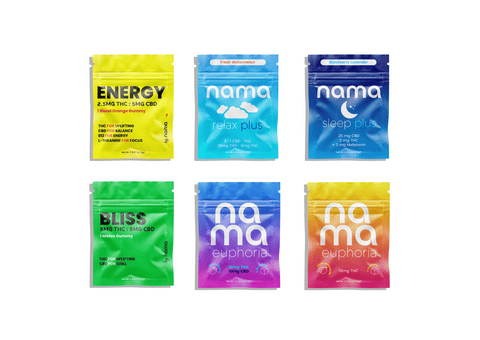
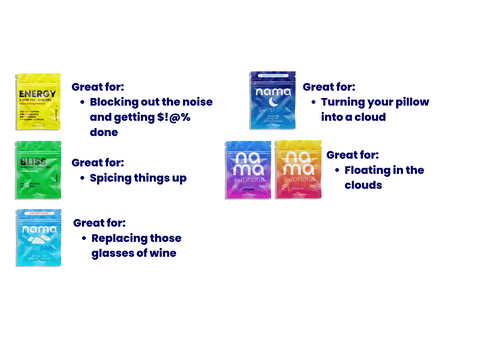
![Buzz Drops™ [THC Drink Drops]](http://www.namacbd.com/cdn/shop/files/nama_thc_buzz_drops.png?v=1711412866&width=480)
![Buzz Drops™ [THC Drink Drops]](http://www.namacbd.com/cdn/shop/files/buzz-drop-wine-comparison.png?v=1736882023&width=480)
![Buzz Packs™ [THC and CBD Powder Drink Mix]](http://www.namacbd.com/cdn/shop/files/nama_buzz_packs_thc_drink_pack_white_background.png?v=1741884660&width=480)
![Buzz Packs™ [THC and CBD Powder Drink Mix]](http://www.namacbd.com/cdn/shop/files/Buzz_Packs_Label.png?v=1741884660&width=480)
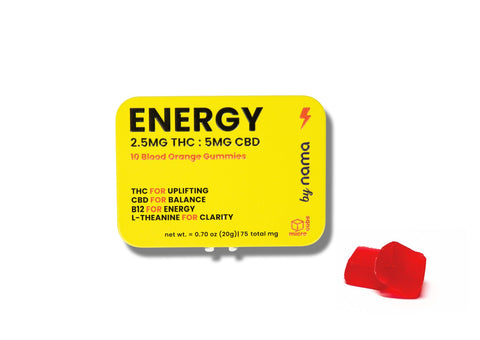
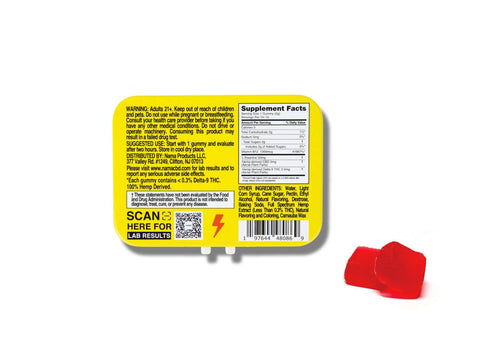
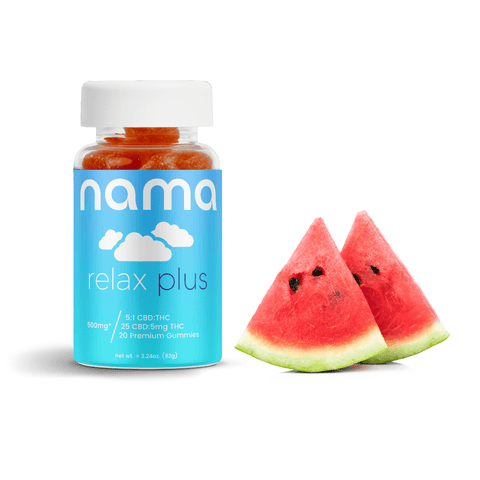
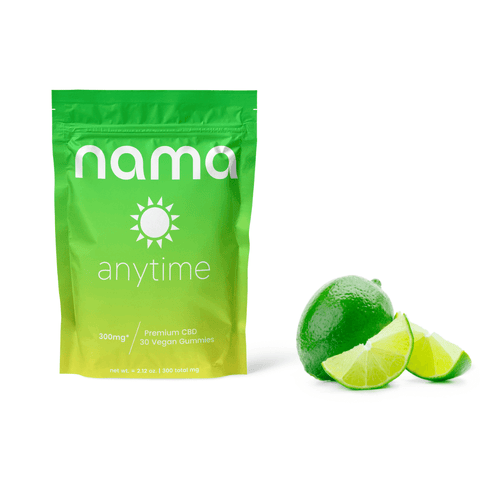
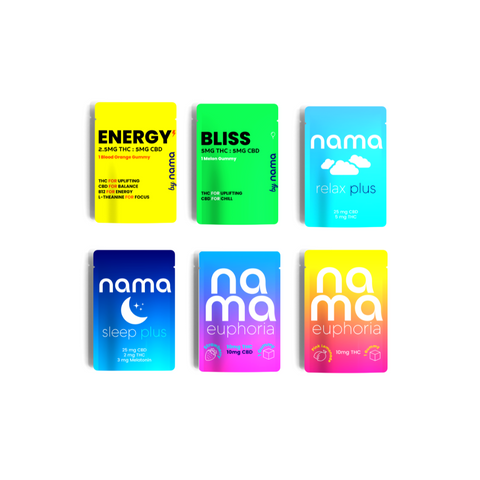
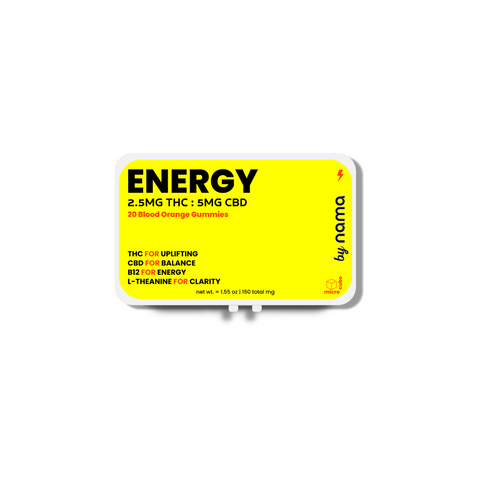

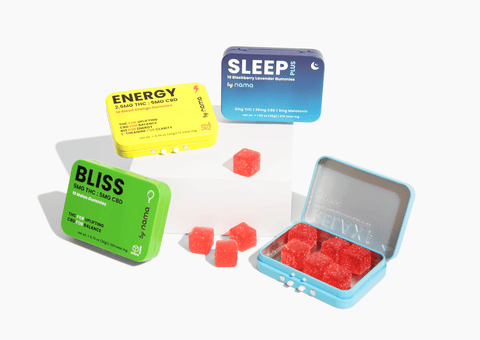
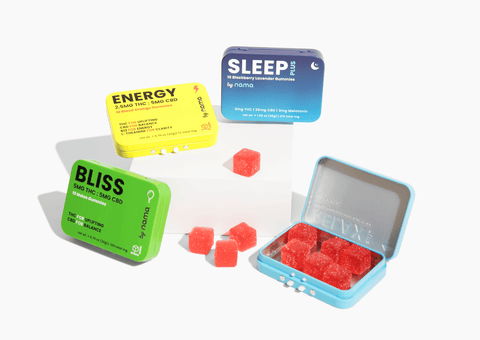
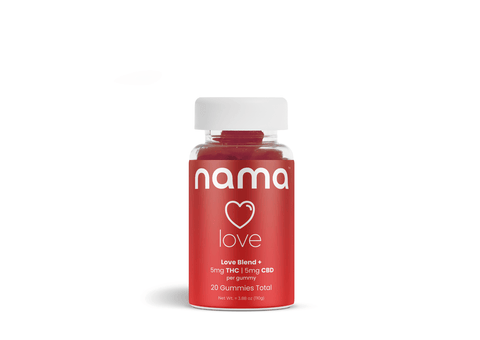

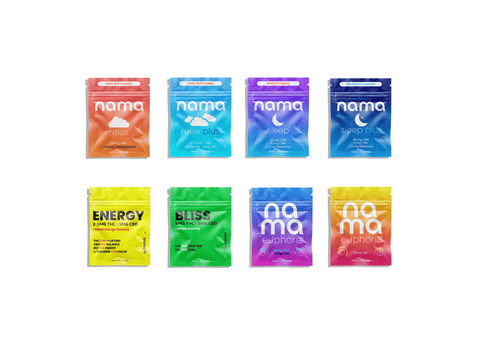
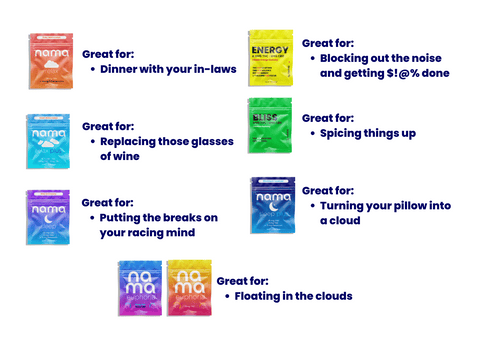
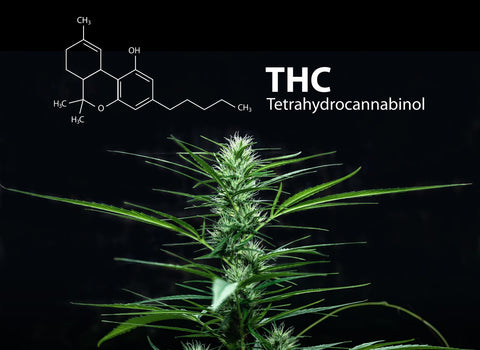
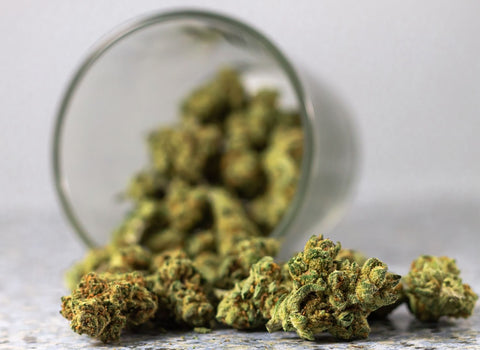

Comments (0)
There are no comments for this article. Be the first one to leave a message!